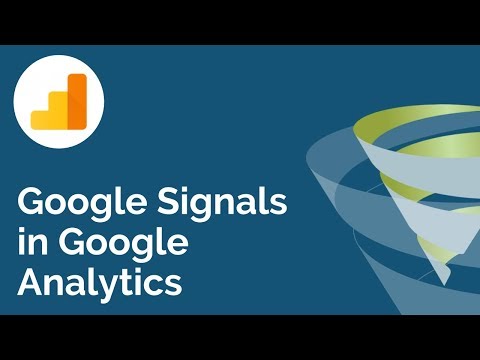In one of its latest bulletins, Google has invited users to activate something called Google Signals in Google Analytics. This new feature promises to ‘unlock new cross-device capabilities and more’, but what actually is it? This T-Time show explains what this Google Signals is, what new reports it enables and what it means for your data in Google Analytics.

In this Google Analytics T-Time show:
- What is Google Signals?
- Google Signals and cross-device tracking improvements
- Google Signals reports available in Google Analytics
- How to activate Google Signals in Google Analytics
- Google Signals and GDPR
What is Google Signals?
(01:10) One problem we’ve always encountered in Google Analytics is that internet users use multiple devices during their journey to a website – and hopefully to a conversion.
Let’s say, for example, that someone uses their mobile to access your website while on their morning commute, but they don’t convert. Later that evening, the same person accesses your website at home via a different device, such as a laptop or tablet, and converts. Historically, those two sessions would be treated separately in Google Analytics and you end up with two sets of user data instead of one.
When you activate Google Signals in Google Analytics, the sessions are tied together to give you a much better understanding of the customer journey through your website.
Google Signals and cross-device tracking improvements
(02:29) With cross-device tracking in place, you can now gain more clarity on the value of those early interactions with your website – this is especially useful if you’re running something like Facebook Ads or any other form of social media PPC campaign.
Google Signals reports available in Google Analytics
(03:11) There are a number of new reports now available through Google Signals in Google Analytics. The first of these is Device Overlap – this is fairly self-explanatory, showing you the percentages of users accessing your site either through a single device or a combination of devices.
You can also analyse the device path and identify how often users are jumping from one device to another. Finally, you can figure out what the acquisition device is for users – this is the first device from which users interacted with your website. This could be critical for your marketing and advertising campaigns as it helps you understand how users are finding your brand in the first place.
Google Signals and GDPR
(04:31) The General Data Protection Regulation (GDPR) shouldn’t be a huge cause for concern when it comes to activating Google Signals in Google Analytics. This is because Google Analytics is not collecting any personal data, and its frequent use of sampling means that you would struggle to identify a user from the data it collects. You’re also not holding users’ names or email addresses unless they have willingly submitted it as part of their session on your site.
If you found this episode of T-Time useful, subscribe to our YouTube channel for more tips and advice on how to improve your business using Google Analytics and other online channels.
Do you have any further questions about Google Signals in Google Analytics, or your Analytics account in general? Let us know in the comments, or click below to speak with one of our specialists and find out more about our Google Analytics training courses.







